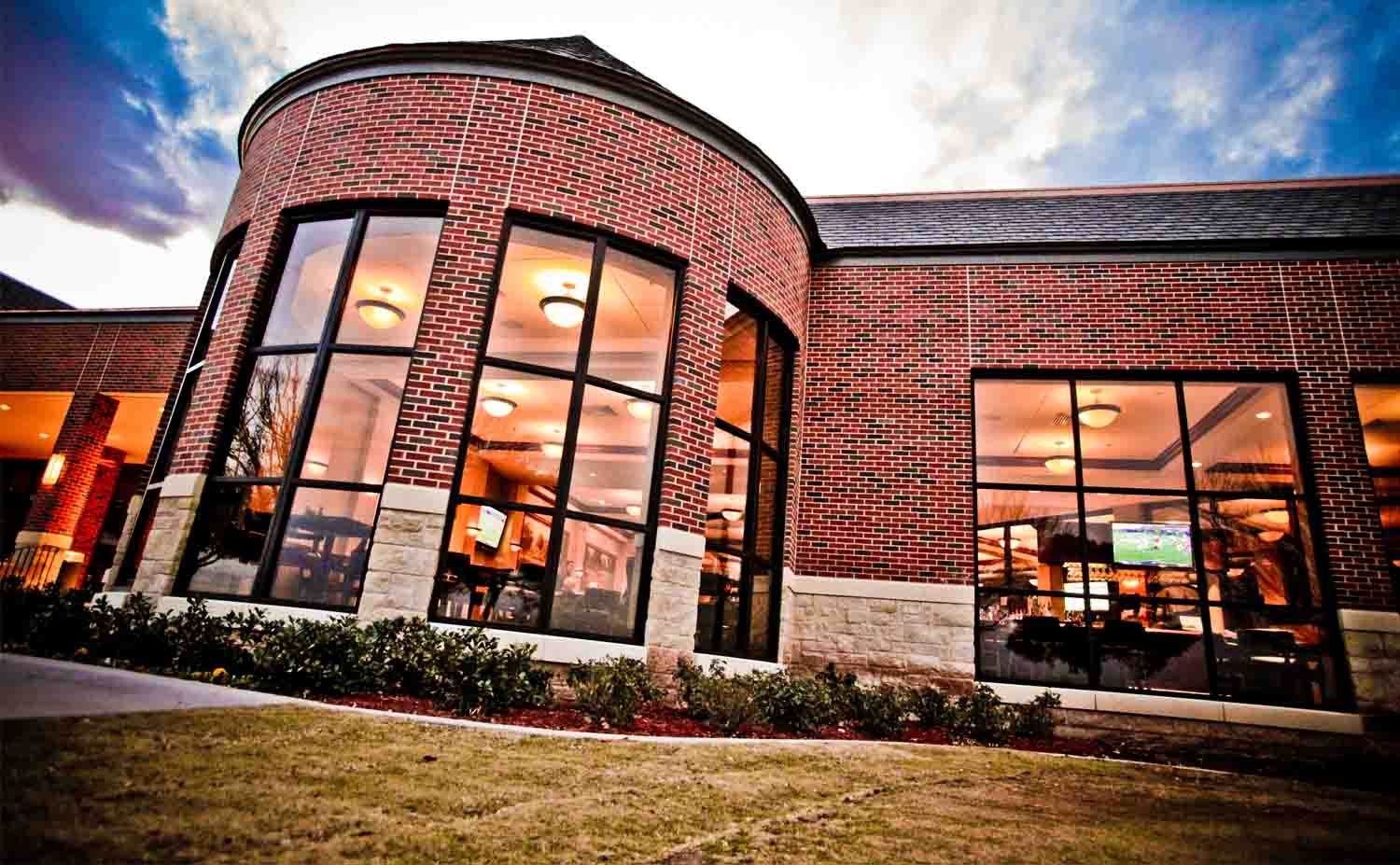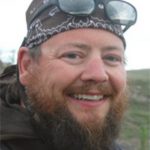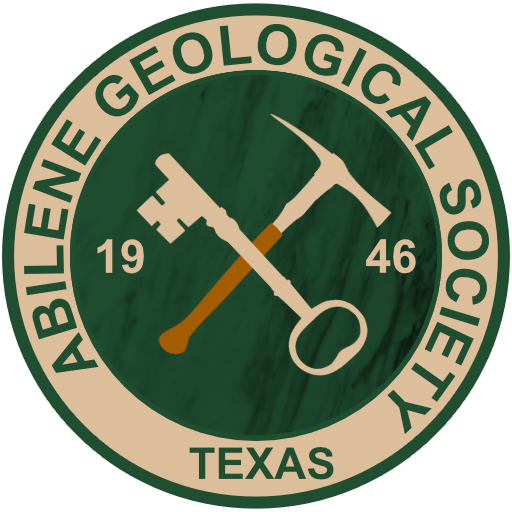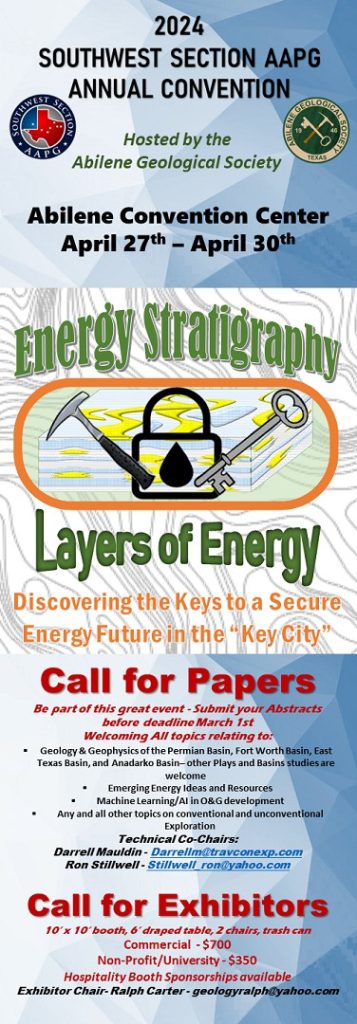
Fellow AGS members,
I hope this finds everyone doing well. Unfortunately, the fourth quarter of 2020 continues to wreak havoc in the same manner as the first three quarters, and more so with the chaos and uncertainty that surrounds the election. Even so, being the resilient folks we are, we continue to push forward and try to normalize things as much as possible. Thus, the AGS will convene for our monthly meeting next Thursday at noon. We have a great talk lined up that will be provided to us virtually via Zoom courtesy of the State of Texas Bureau of Economic Geology (BEG) in Austin. Dr. Peter Flaig with BEG’s Advanced Resource Recovery group will be presenting the unpublished, ongoing work his team is pursuing on deposits of the Strawn Group in the Fort Worth Basin and Eastern Shelf of the Permian Basin. We have the honor of being the first to receive some preliminary results of their work, so I know you’ll want to join us either in person or virtually via Zoom. Since this information is as yet unpublished, we ask that everyone honor the BEG’s request not to record the presentation. I really appreciate Dr. Flaig’s willingness to share his research with us.
I look forward to seeing everyone at the meeting, whether in person or virtually!
David Laurence, P.G.
AGS President 2020-2021
November 19, 2020 Meeting
Speaker will be Dr. Peter P. Flaig
“Depositional Systems of the Strawn Group in the Fort Worth Basin and Eastern Shelf of the Permian Basin”

Dr. Peter P. Flaig is a Research Scientist at the Bureau of Economic Geology, Jackson School of Geosciences, University of Texas at Austin. His specialty is clastic sedimentology and stratigraphy of depositional systems from the hinterland to the shelf, including deposits of fluvial, deltaic, and complex coastal to shelf systems. His Master’s work took him to the Central Transantarctic Mountains of Antarctica where he examined fluvial sedimentation across the Permian-Triassic boundary. During his PhD research on the North Slope of Alaska, Peter collaborated with paleontologists to help identify the ancient depositional systems and ecosystem of the dinosaur-bearing Prince Creek Formation. He joined the Bureau of Economic Geology in 2009 for a 2-year Jackson School postdoctoral fellowship, and then spent 7 years as lead scientist on fluvial, deltaic, and shallow marine research at the Quantitative Clastics Laboratory Industrial Associates Consortium. In addition to currently working for the State of Texas Advanced Resource Recovery program, Peter also works for the Alaska North Slope Integrated Projects program. Peter’s research focuses on deposits of clastic and mixed carbonate clastic systems and typically integrates sedimentology, ichnology, paleopedology, high-resolution image capture and analysis (e.g. drone photogrammetry), and petroleum geology. He has worked extensively on deposits of the Cretaceous Western Interior Seaway from Texas through the southwestern US (UT, CO, WY), Canada, and into Alaska. Peter has also investigated strata deposited across the Paleocene-Eocene Thermal Maximum in Wyoming and Texas, reservoirs in the Eastern Shelf of the Permian Basin, the Brookian Megasequence on the North Slope of Alaska, the Cretaceous-Tertiary of Patagonia, and Permo-Triassic deposits of Antarctica. Peter earned a BS in Geology from the University of Wisconsin-Milwaukee, an MS in Geology and Sedimentology from the University of Wisconsin-Milwaukee, and a PhD in Geology and Sedimentology from the University of Alaska-Fairbanks.
“Depositional Systems of the Strawn Group in the Fort Worth Basin and Eastern Shelf of the Permian Basin”
Peter P. Flaig1, William A. Ambrose1, Andrew K. Roberts1, Stephen T. Hasiotis2, David L. Carr1
1Bureau of Economic Geology, University of Texas at Austin
2Department of Geology, University of Kansas, Lawrence, Kansas
This talk is a survey of the ongoing work that the State of Texas Advanced Resource Recovery group at Bureau of Economic Geology and our collaborators are pursuing on deposits of the Strawn Group in the Fort Worth Basin and Eastern Shelf of the Permian Basin. Our goals are to clarify depositional system interpretations as well as identify their characteristics and vertical and lateral relationships. We do this to improve predictive subsurface models for variations in facies and facies stacking, sandbody and shale geometries, and the distribution of different types of Strawn deposits in the region.
The Lower Strawn Group in the subsurface in Jack and Wise counties, Fort Worth Basin, comprises laterally and vertically heterogeneous deltaic deposits, coal, and discontinuous carbonates reflecting cyclothems deposited during icehouse conditions. We develop a stratigraphic framework, identify individual sequences, and propose depositional controls for reservoir predictability. Paleoenvironments included prodelta, medial delta front, interdistributary-bay, channel mouth bar, and distributary-channels. Wireline log correlations using regionally-extensive maximum flooding surfaces helped us develop a sequence stratigraphic framework that reveals eleven regressive-transgressive, fluvio-deltaic sequences averaging 90-240ft thick, collectively spanning a thickness of 1,000-2,700 ft. (305-823 m). A south-southwest overall direction of progradation was identified based on the distribution of net sandstone thickness trends.
Outcrops of the Lower Strawn from a quarry in San Saba County (Strawn Sandstone Member #3) expose similar deltaic deposits as those interpreted from core in Jack County, also with south-directed paleoflow. Sandy mouth bar deposits with mud-draped sedimentary structures suggest tidally-modified delta deposits. Well-preserved paleobotany is consistent with a Pennsylvanian, coastal-deltaic setting. These delta deposits also contain a marine trace fossil assemblage that includes Teredolites, interpreted to be the oldest known evidence of marine wood-boring clams.
Core and wireline logs from the Upper Strawn Group in Stonewall and King Counties reveal both quartz-rich and carbonate clast-rich intervals. Quartz-rich sandbodies are trough to current-ripple cross-stratified with intervals of well-developed herringbone cross-stratification, mud rip-up clasts, mud balls, and mud-drapes. These sandbodies are moderately to heavily bioturbated with a diverse and abundant marine trace-fossil assemblage. Interbedded intervals of carbonate-clast rich sandstone with fragments of crinoids, bivalves, carbonate, and ooids are typically trough-to-ripple cross-stratified with mud drapes, mud clasts, mud balls, and some dipping beds. Bioturbated wavy-to lenticular bedded siltstones and flaser-bedded sandstones are interbedded with the quartz-rich and carbonate-clast rich sandstone. The interfingering nature of the quartz rich, carbonate-rich, and muddy heterolithic deposits in core suggest that these are deposits of complex, tidally modified deltaic marine deposystems that interfinger with carbonate factories along a shallow-dipping, low-gradient shelf-ramp. Gamma-ray logs, shale volume logs (VSH), resistivity logs, density logs (RHOB), and photovoltaic factor logs (PEF) are consistent with stacked coarsening-upward successions that reflect migrating-switching delta lobes that interfingered with shelf carbonates prior to deposition of the overlying Canyon Group sequences. Newly refined net sandstone maps developed from VSH logs near the Katz field showcase the evolution of deltaic parasequences in the Upper Strawn.
Members and guests are welcome. Reservations are encouraged! Meal prices are $20 without a reservation and $10 with a reservation.






